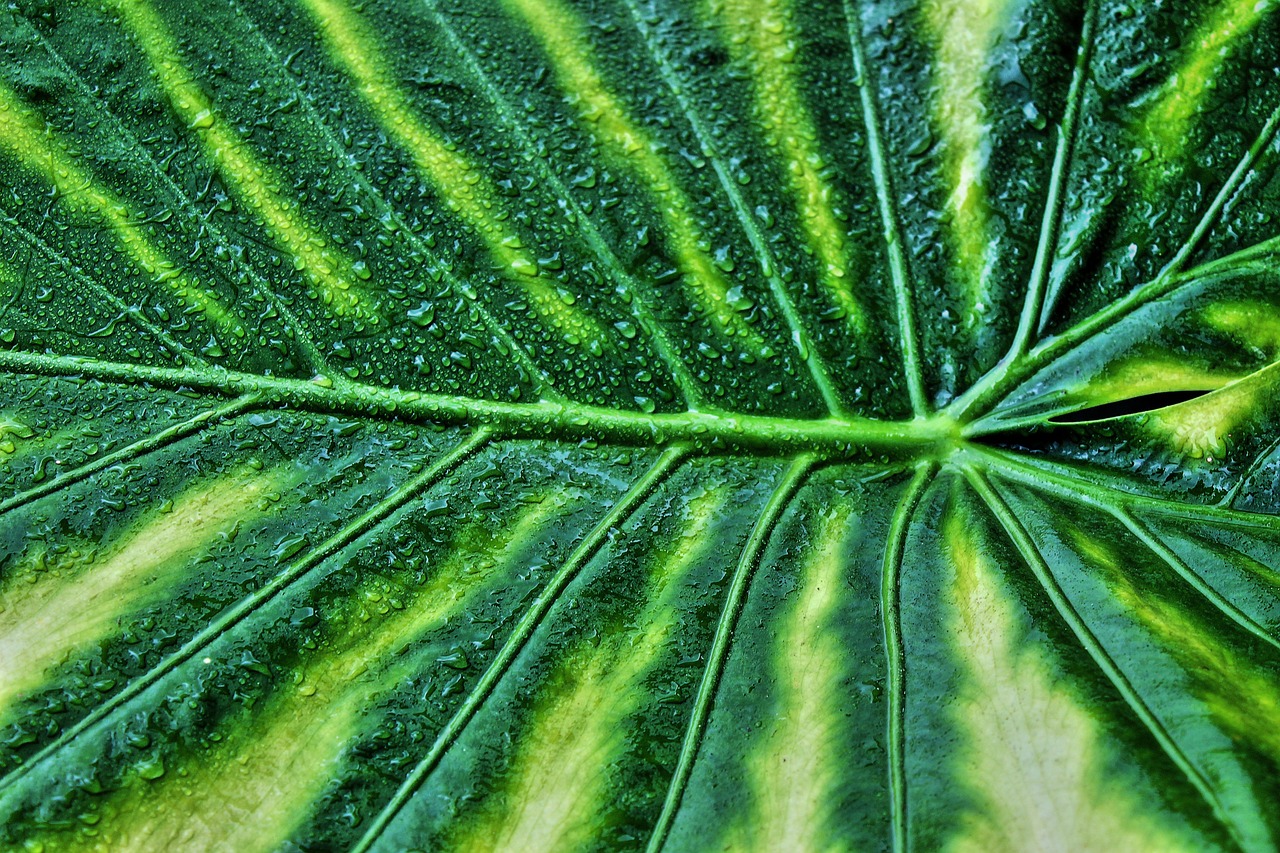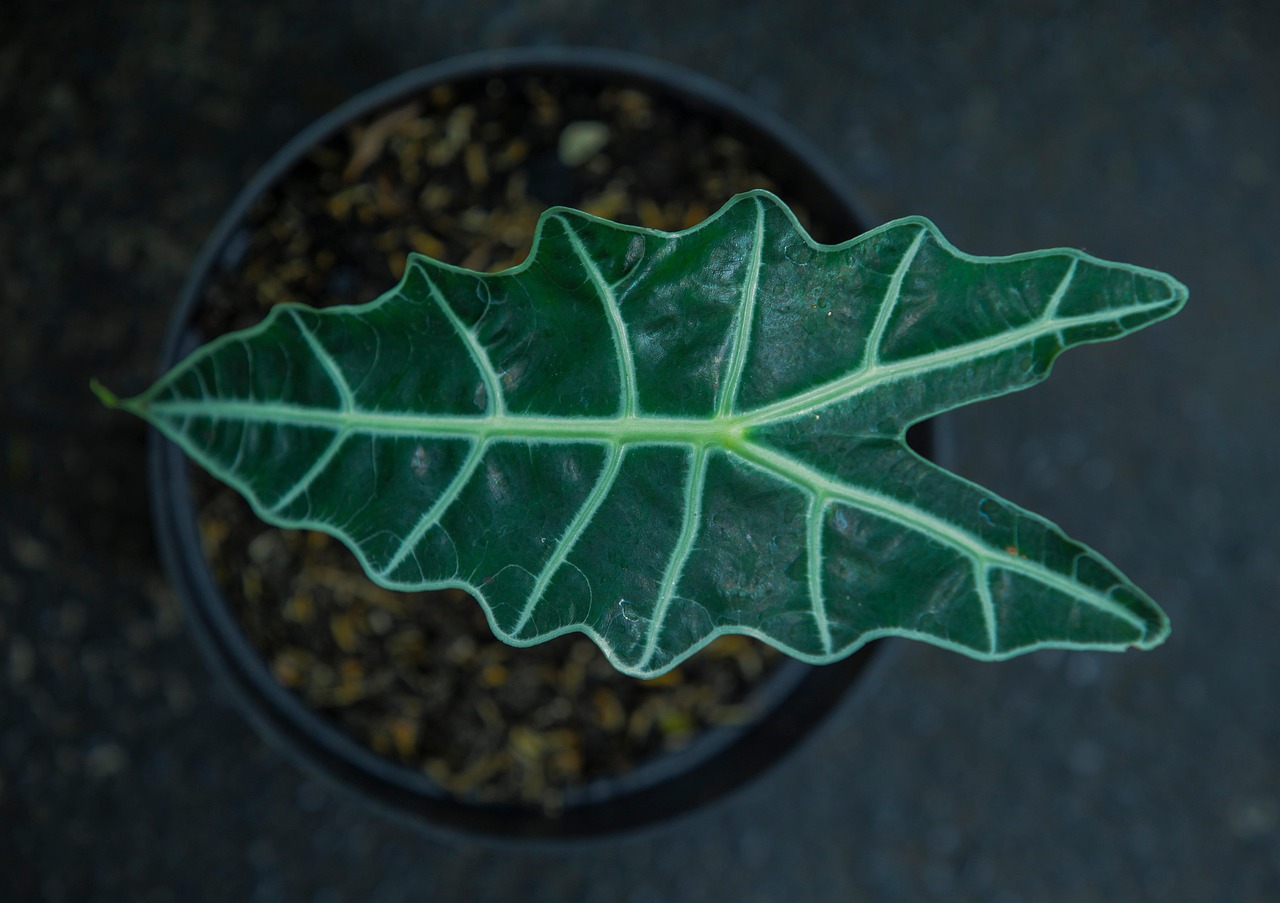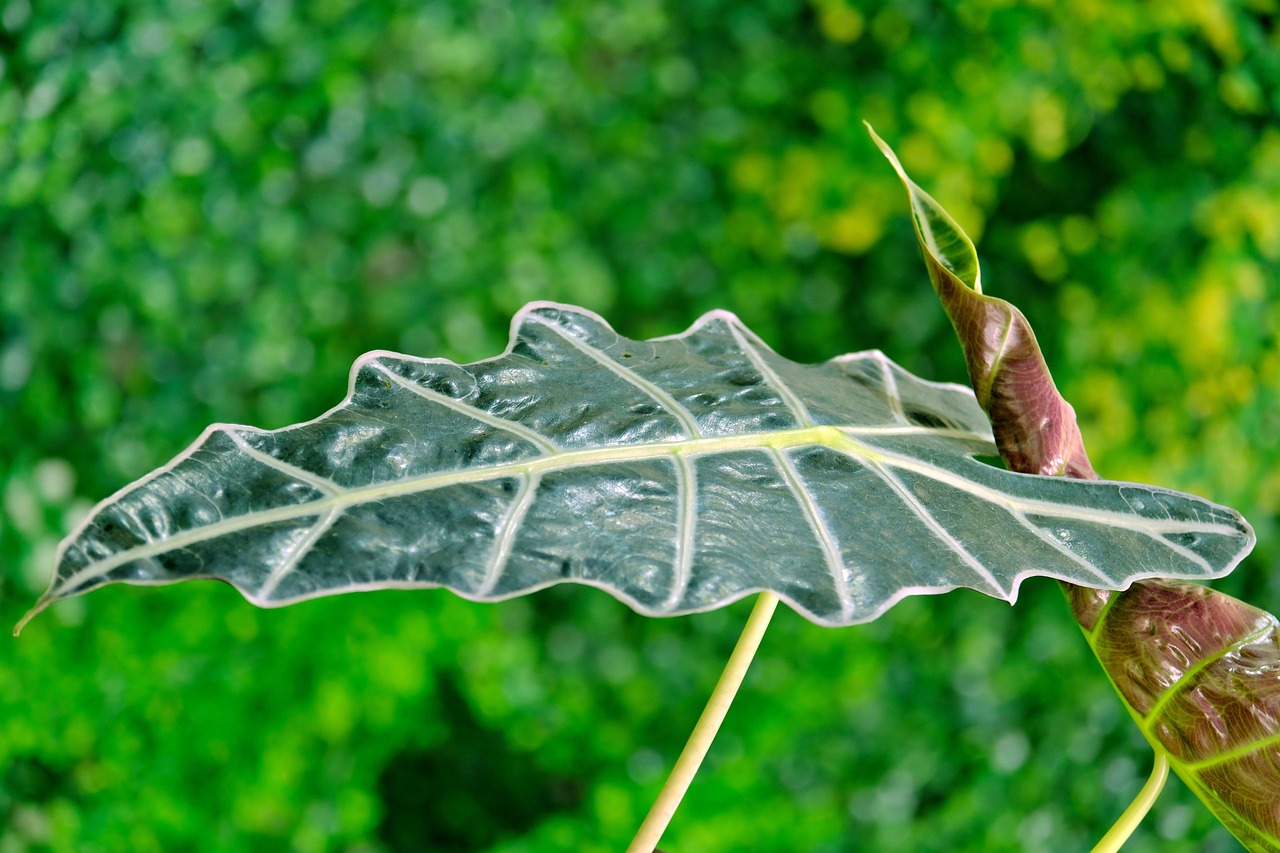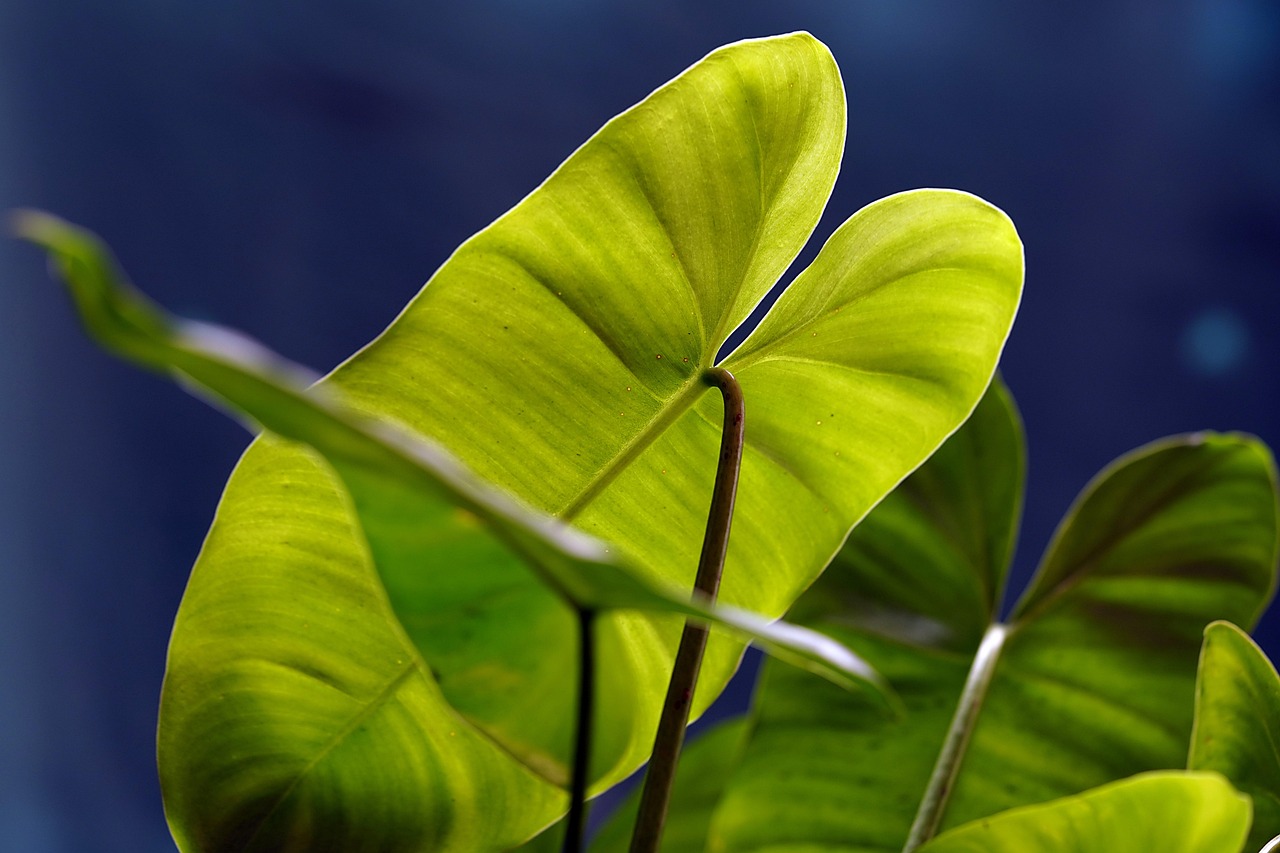Alocasia plants can be toxic to pets, especially cats and dogs. They contain calcium oxalate crystals, which can cause irritation and discomfort if ingested. It is crucial for pet owners to keep these plants out of reach of their furry companions to ensure their safety.
Understanding Alocasia Plants

Alocasia, commonly referred to as elephant ear plants, are popular houseplants known for their striking foliage and unique shapes. They belong to the family Araceae and are native to tropical regions. With large, glossy leaves, these plants can enhance the aesthetics of any indoor space. However, their beauty comes with certain risks for pet owners.
Many plant enthusiasts are drawn to Alocasia due to their dramatic appearance. They can grow quite large and often become a focal point in a room. There are several species of Alocasia, each with its own unique features. Some of the most popular varieties include Alocasia Polly, Alocasia Zebrina, and Alocasia Amazonica.
Why Are Alocasia Plants Toxic?
The toxicity of Alocasia plants is due to the presence of calcium oxalate crystals. These tiny crystals are found in various parts of the plant, including the leaves and stems. When a pet bites into the plant, these crystals can cause irritation in their mouth and throat.
The symptoms of ingestion may vary depending on the amount consumed and the size of the pet. Common signs include:
- Oral irritation
- Difficulty swallowing
- Excessive drooling
- Vomiting
- Swelling of the mouth or throat
Identifying Symptoms of Toxicity
If a pet shows any signs of distress after being near an Alocasia plant, it is important for owners to act quickly. Immediate veterinary attention may be necessary if symptoms persist or worsen. Understanding the signs of toxicity can help in promptly addressing any potential issues.
Table of Symptoms
| Symptom | Description |
|---|---|
| Oral Irritation | Burning sensation in the mouth. |
| Difficulty Swallowing | Struggling to swallow food or water. |
| Excessive Drooling | Increased saliva production. |
| Vomiting | Expelling stomach contents. |
| Swelling | Inflammation in the mouth or throat area. |
Precautions for Pet Owners
For those who love Alocasia but also have pets, there are several precautions that can be taken to create a safe environment. First, consider placing the plants in areas that are inaccessible to pets. Hanging baskets or high shelves can be effective solutions.
Additionally, educating yourself about the specific varieties of Alocasia and their toxicity levels can help you make informed decisions about your plant choices. Always supervise pets around plants and monitor their behavior for any signs of interest in chewing or playing with them.
By taking these precautions, pet owners can enjoy the beauty of Alocasia without compromising their furry friends’ safety.
Alternative Plants for Pet Owners
If you’re a pet owner and love the aesthetics of houseplants, consider exploring alternatives to Alocasia that are safer for your furry friends. Thankfully, there are numerous non-toxic plants that can add beauty to your home without posing a risk to pets. Below are some popular options.
Non-Toxic Houseplants
Here are some non-toxic houseplants that are pet-friendly and can serve as excellent substitutes for Alocasia:
- Spider Plant (Chlorophytum comosum): A resilient plant known for its air-purifying qualities and easy care.
- Boston Fern (Nephrolepis exaltata): This lush fern thrives in humid environments and is safe for pets.
- Areca Palm (Dypsis lutescens): A popular indoor palm that adds a tropical feel without toxicity.
- Calathea (Calathea spp.): Known for its stunning leaf patterns, this plant is both beautiful and pet-safe.
- Ponytail Palm (Beaucarnea recurvata): A unique, low-maintenance plant that is non-toxic to pets.
Identifying Alocasia Varieties
Understanding the different varieties of Alocasia can help you make informed decisions about your plant collection. While all Alocasia plants share some common characteristics, each variety has unique traits that may influence your choice based on their care needs and appearance.
Popular Alocasia Varieties
The following are some well-known Alocasia varieties, along with their distinctive features:
- Alocasia Polly: Known for its striking arrow-shaped leaves with prominent veins. This variety thrives in bright, indirect light.
- Alocasia Amazonica: This hybrid features dark green leaves with a glossy finish. It prefers humid conditions.
- Alocasia Zebrina: Characterized by its zebra-striped stems, this variety adds a bold touch to any space.
- Alocasia Macrorrhiza: Known as the giant taro, it features large leaves and can grow quite tall.
- Alocasia Wentii: This variety has dark green, glossy leaves with a slight purple underside, making it visually striking.
Care Tips for Alocasia Plants
If you decide to keep Alocasia plants despite their toxicity, proper care is essential to maintain their health and appearance. Here are some care tips to help your Alocasia thrive:
- Light: Alocasia plants prefer bright, indirect light. Avoid direct sunlight as it can scorch the leaves.
- Water: Water when the top inch of soil feels dry. Ensure the pot has drainage holes to prevent root rot.
- Humidity: These plants thrive in high humidity. Consider using a humidifier or misting the leaves regularly.
- Temperature: Maintain a temperature between 65°F to 80°F. Keep them away from drafts and sudden temperature changes.
- Fertilizer: Use a balanced, water-soluble fertilizer during the growing season (spring and summer) every 4-6 weeks.
Creating a Safe Environment
For families with pets, creating a safe environment is crucial. If you want to keep both Alocasia plants and pets, here are some strategies you can implement:
- Plant Placement: Position plants on high shelves or in rooms that are off-limits to pets.
- Pest Control: Regularly check plants for pests that could harm them or your pets. Use pet-safe pest control methods if needed.
- Education: Teach your pets to avoid certain areas or plants through training techniques.
- Distraction: Provide your pets with safe toys or plants to chew on to deter them from exploring harmful options.
By taking these steps, you can enjoy the beauty of Alocasia while keeping your pets safe from potential harm. Informed decisions about plant choices and care can create a harmonious living space for everyone involved.

Understanding Plant Toxicity Levels
When considering houseplants, understanding their toxicity levels is vital for pet owners. Not all plants that are toxic have the same level of danger. Alocasia plants contain calcium oxalate crystals, which can cause discomfort but are not typically life-threatening. However, it is essential to know how different levels of toxicity affect pets.
Categories of Plant Toxicity
Plants can be classified into various categories based on their toxicity. Here are the common classifications:
- Non-Toxic: These plants do not cause harm to pets if ingested. Examples include spider plants and Boston ferns.
- Mildly Toxic: These plants may cause minor health issues such as vomiting or diarrhea if ingested. However, they typically do not present a severe risk. Alocasia falls into this category.
- Moderately Toxic: These plants can cause more significant health problems and may require veterinary attention if ingested. Symptoms might include excessive drooling or difficulty breathing.
- Highly Toxic: These plants pose a serious threat to pets and can lead to severe health complications or death if ingested. Immediate veterinary care is often necessary.
Signs Your Pet May Have Ingested Alocasia
If you suspect your pet has ingested part of an Alocasia plant, it is crucial to monitor them closely for any signs of distress. Here are some symptoms to watch for:
- Oral Discomfort: Your pet may paw at their mouth or drool excessively due to irritation.
- Vomiting: Frequent vomiting can indicate that your pet has ingested something harmful.
- Lethargy: If your pet seems unusually tired or inactive, it could be a sign of an adverse reaction.
- Loss of Appetite: A sudden change in eating habits may signal that something is wrong.
- Swelling: Noticeable swelling around the mouth or throat can indicate irritation from the plant’s toxins.
If any of these symptoms occur, it is essential to contact your veterinarian immediately for advice and potential treatment.
What to Do If Your Pet Ingests Alocasia
If you suspect your pet has ingested Alocasia, here are steps you should take:
- Stay Calm: Your reaction can influence your pet’s behavior. Stay composed while assessing the situation.
- Evaluate Symptoms: Observe your pet for any symptoms of toxicity as mentioned earlier.
- Contact Your Veterinarian: Provide details about the plant and any symptoms your pet is experiencing. Follow their guidance.
- Avoid Home Remedies: Do not attempt to treat your pet with home remedies without consulting a professional. Some remedies may worsen the situation.
Long-Term Management Strategies

For pet owners who wish to keep Alocasia plants in their homes, implementing long-term management strategies can help maintain a safe environment. Effective management includes regular monitoring and preventive measures.
Regular Monitoring
Keeping a close eye on both your plants and pets can prevent potential issues. Here are some tips for regular monitoring:
- Check Plant Health: Regularly inspect your Alocasia plants for signs of pests or disease that could attract pets.
- Observe Pet Behavior: Watch how your pets interact with plants to understand their curiosity levels and habits.
- Maintain Cleanliness: Keep the area around your plants clean and free from fallen leaves or debris that could attract pets.
Creating Visual Barriers
A visual barrier can help deter pets from approaching Alocasia plants. Consider these options:
- Potted Plants with Decorative Stones: Use decorative stones or marbles in the pot to make it less appealing for pets to dig.
- Aromas Pets Dislike: Some scents, such as citrus or vinegar, can deter pets. Use these scents around plant areas to keep them away.
- Cage or Netting: Consider using small cages or netting around plants in easily accessible areas to create a physical barrier.
By combining these strategies with proper education about plant safety, you can enjoy the beauty of Alocasia while ensuring the welfare of your beloved pets.
Considerations for Choosing Alocasia

While Alocasia plants are undeniably beautiful and can enhance your indoor space, it is essential to weigh the risks and benefits before deciding to bring them into a pet-friendly home. Here are some additional considerations to keep in mind:
- Pet Behavior: Different pets have varying levels of curiosity and tendency to chew on plants. Understanding your pet’s behavior can help you make a more informed decision.
- Plant Care Needs: Alocasia plants require specific conditions to thrive, including humidity and light. Make sure you can meet these needs before introducing them into your home.
- Alternatives to Alocasia: If you are concerned about the safety of Alocasia for your pets, consider exploring other houseplants that offer similar aesthetic appeal without the associated risks.
- Consulting a Veterinarian: If you have concerns about plant toxicity and pet health, consult your veterinarian for personalized advice based on your pet’s specific needs.
Final Thoughts
Bringing Alocasia plants into a home with pets requires careful consideration and planning. While these plants can create a stunning visual impact with their large, dramatic leaves, their toxicity does pose a risk to curious pets. Understanding the nature of Alocasia and its effects on animals is essential for ensuring their safety.
By implementing appropriate precautions—such as monitoring plant placement, maintaining cleanliness, and creating visual barriers—pet owners can minimize potential risks. Additionally, being aware of the symptoms of toxicity and knowing how to respond can help safeguard your pet’s health. It’s important to educate yourself about both the plants you choose and the behavior of your pets to create a harmonious living environment.
Ultimately, the decision to keep Alocasia plants should align with your lifestyle, your pet’s behavior, and your ability to provide a safe space. Whether you opt for Alocasia or choose alternative non-toxic plants, you can create a beautiful home filled with greenery while ensuring your pets remain safe and healthy.
In summary, with careful planning and awareness, pet owners can enjoy the beauty of houseplants without compromising the well-being of their beloved companions. Make informed choices that suit your living space, and embrace the joy that both plants and pets can bring into your life.
